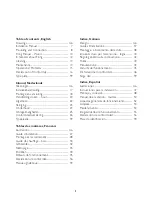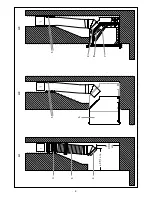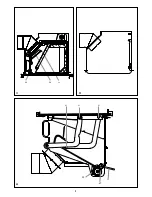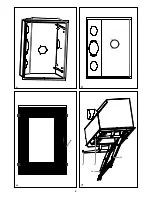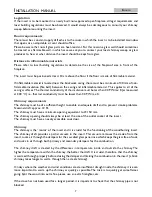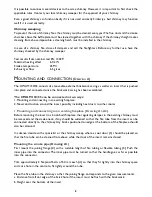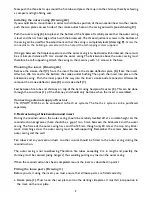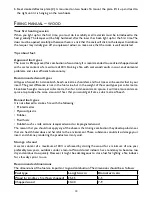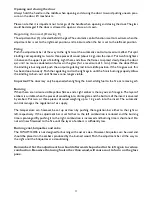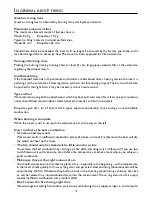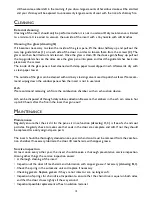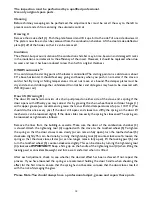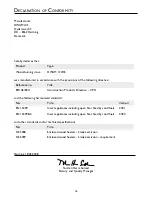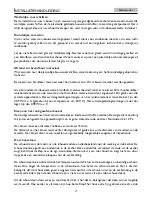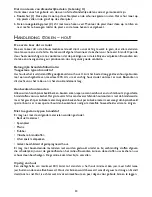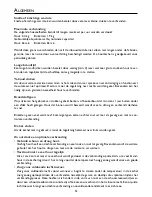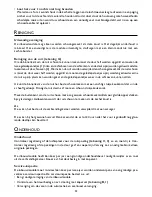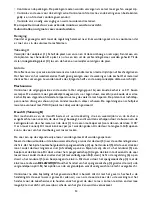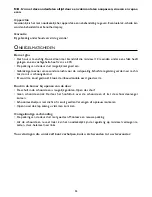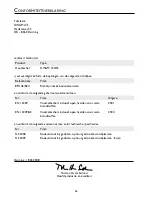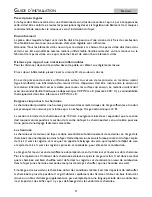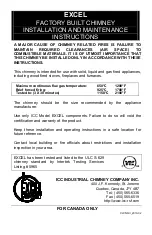
12
I
n
gEnEral
about
FIrIng
Quick or strong heat
Quick or strong heat is obtained by burning many small pieces of wood.
Maximum amounts of fuel
The maximum allowed amount of fuel per hour is:
Wood: 2. kg
Briquettes: 1.9 kg
Typical re-firing interval at nominal performance
Wood: 65 min
Briquettes: 65 min
Should these limits be exceeded, the insert will no longer be covered by the factory guarantee, and it
may be damaged due to excessive heat. The stove has been approved for intermittent use.
Prolonged burning time
Prolong the burning time by burning a few (at least 2) very large pieces wood whilst at the same time
regulating the damper down.
Insufficient firing
If the fireproof materials in the combustion chamber are blackened after a heating session, the insert is
polluting, and the automatic air flow regulation system is not functioning properly. The bar must therefore
be pushed to the right. Also, it may be necessary to burn more wood.
Types of fuel
We recommend using birch or beechwood, which has been split and stored for at least one year outdoors
under cover. Wood stored indoors tends to become too dry and burn too quickly.
Briquettes give off a lot of heat. Certain types expand considerably, thus causing an uncontrollable
combustion.
When burning is complete
When the insert is not in use, push the adjustment bar all the way to the left.
How to achieve the best combustion
• Use clean and dry wood.
Wet wood results in inefficient combustion, plenty of smoke, and soot. Furthermore, the heat will dry
the wood, not heat up the room.
• The fire should only be stoked with a little wood at a time.
You achieve the best combustion by starting up a fire often and using only a little wood. If you use too
much firewood, it will take some time before the temperature reaches a level where you achieve a
good combustion.
• Make sure there is the right amount of air.
You should also make sure that there is plenty of air – especially in the beginning - so the temperature
in the insert climbs quickly. In this way the gasses and particles released during the combustion will be
consumed by the fire. Otherwise they build up soot in the chimney (constituting a chimney fire risk)
or will be released in a non-combusted state into the environment. The wrong amount of air supply
creates inefficient combustion and a modest effect.
• Don’t savour the fire during night time
We advise against adding fire wood to your stove and reducing the air supply at night in an attempt to
Summary of Contents for 55s
Page 2: ......
Page 4: ...1 1 1 A1 A2 A3 7 8 5 6 5 4 3 2 a 39 1 cm b 40 4 cm 1 2...
Page 5: ...D C 3 2 1 B 1 1 1 6 5 4...
Page 6: ...E F G 1 1 1 2 2 H...
Page 57: ...57...
Page 58: ...58...
Page 59: ......
Page 60: ...hwam hwam com www hwam com...



